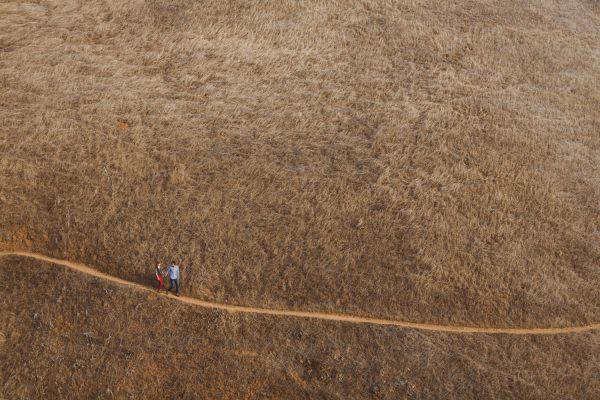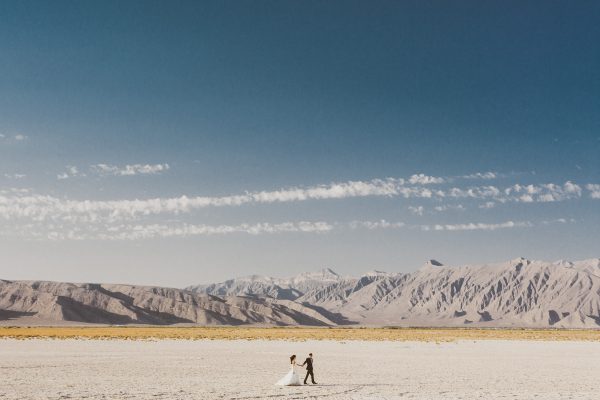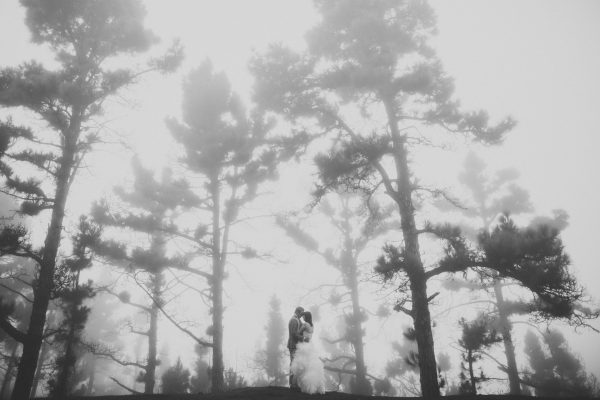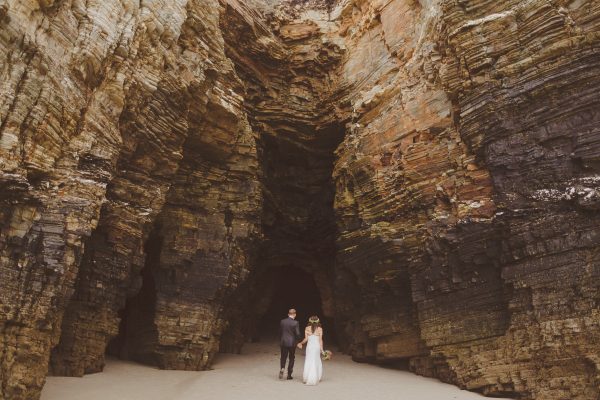
Beginning his career as an aerospace engineer, Ed Peers is a man of mystery to most. On top of leading what might be considered one of the most interesting of lives, his photography and creative approach have positioned him as a major influencer in the industry. Branding himself as a destination wedding photographer, Ed flies around the world snapping some of the most beautiful people, in the most surreal of places. Last week, we asked you to ask Ed anything, and today he’s here to share his answers. Take it away, Ed!
What are your top two go-to lenses for weddings, and why?
If I could only have one lens it would be a 35mm. I find it such a versatile focal length: you can shoot anything from landscapes to portraits with it. It’s also a great storytelling focal length; wide enough to capture the scene whilst forcing you to get a little closer for an intimate feel. Second for me would be a 50mm. I think 90% of my portraits are taken at this focal length. For me, it’s just the perfect balance between distance from subject, compression, and natural field of view.
Where do you get your inspiration from?
I try to draw inspiration from as many places as possible: music, art, design, film, print, travel and landscape to name a few. Within all these, there are particular genres that appeal/connect with me and I do my best to surround myself with these and let them influence my work. We work in such a saturated market and it’s important that we’re unique. I think the way to do that is stop looking at other wedding photographers as sole sources of inspiration and look beyond – there’s so much out there to be inspired by.
What was one of your best investments that played a major role in your career other than equipment?
Since I travel a lot, I’m constantly investing in travelling well. I think travel can either energise, inspire, and make you productive, or alternatively, sap all your energy and the enthusiasm for what you do. Therefore I often choose to spend a little more on a better flight and comfy bed, so that even if I’ve travelled half way around the world for a wedding, I’m always giving my best.
When taking this photo, do you take multiple shots and then lay them all out on photoshop?
Sure, I think photography is about trial and error and learning from your mistakes – we very rarely nail a shot in one attempt. With that said, I try and shoot as little as possible and adopt the mindset that I’m shooting valuable film. I think this makes you think a little more about each frame, which will make you a better photographer and limit the amount of work you need to do in post. With this particular frame, since they’re walking and not static I took several frames in order to capture the couple in an attractive moment in their stride.
The majority of your pictures have an amazing backdrop with subjects either in, around or in front of. What do you tend to look for when you’re in less than desirable settings?
That’s a good question. The number one thing I look for in any setting is the quality of light. The general rule is ‘light over location’. I’m always trying to keep things simple and reduce the number of elements in each frame. Good light against a plain wall will do, and that wall could even be in the gents (which I’ve done before), or in an incredibly messy room. You often only need a small area to work with. One tip when a location is too “busy” and distractive is to shoot “up” to crop out ground level.
What is your approach to couple portraits? Do you direct and pose much, or leave it mostly to the couple?
My aim is to be as hands-off as possible. I want to capture my couples naturally: how they are and how they usually interact. This way their portraits are going to be authentic. The key to this is building a rapport with the couple so that they feel comfortable. Sometimes you can look at a portrait and it’s obvious a couple have been heavily directed by a photographer. I think the key to a good portrait, and storytelling for that matter, is an honesty and an authenticity. Typically I will place my couple in some good light within a scene and let them be themselves. I then do most of the moving to get different compositions instead of constantly adjusting them which is going to inhibit those natural moments from happening.
How did you make the ‘Travel Destination Photographer’ work? I see a lot of photogs put that on their website but it’s all local portfolio work. How did you actually get off the ground and get travelling?
I think you pretty much just answered your own question to a degree… The key for me was to brand for destination, even when I wasn’t travelling as much. Branding for travel is quite simple – we’ve all probably heard the phrase “show what you want to sell” and that’s so true. The only way to sell destination work is to show destination work. I’ve always limited showing local work in favour of showcasing destination work, even if it means posting less frequently. It takes a lot of trust and confidence for a client to fly you to a wedding the other side of the world and the job of your brand is to instil that trust and confidence through your portfolio. As a result, the majority of my inquires are for overseas weddings, though if you overdo it things can go the other way and you might struggle to book local weddings. The balance can be tricky…
How much do you direct the wedding day? Most of your shots look ‘go with the flow but it’s hard to believe you get all the shots you do without having an influence over when and where you shoot.
The only two times during a wedding I really ‘step in’ and have any kind of influence on the day are for the couple portraits (see my answer to a previous question), and the family portraits. Other than that I’m looking for authenticity and that means capturing the day as it unfolds naturally without any direction from me. You’ll never find me “redoing” any part of the day. That said, if a bride is getting ready in a dingy part of a room then I may ask her to move into the window light, but I won’t tidy a messy room – I prefer just to leave things as they are and work around them. This sometimes means I have to compromise on the technical aspect of a photograph, but I’d take authenticity over this every time.
Is it true that magic socks are behind your success?
Haha! Jim Pollard introduced me to his “magic socks” whilst I was in New Zealand recently. Some blend of magical NZ wool from some kind of lambs with super powers (I’m told) that keep your feet feeling amazing all day long. Joking aside, being comfortable is absolutely key, and I carry the minimal amount of gear, wear comfortable clothing, and am always looking for that elusive pair of shoes that are both smart enough, but comfortable enough and never get scuffed when you’re taking portraits on a mountainside 🙂
A big thanks to Ed Peers for revealing some of his tips and advice. If you’re looking to read more about Ed and see more of his work, be sure to check out his photographer spotlight interview. Our next Ask features two photographers based in Sweden. Can you guess who?




Great article Junebug! Ed’s an incredible photographer and great to work with. He makes an important point about it being a brave move to only show the work you want to do, even if it means not showing as much. Probably an aspect most of us in the industry struggle to get right.
Fab interview, Ed’s work is just amazing!
Terrific interview, love Ed’ work and thanks for sharing his creative process. cheers!
I finally set aside few minutes and a hot cup of tea to read this 🙂 Fab interview mate, so thrilled for all your success in building a business around doing what you love! Only trouble with the jet-setting is we never see you anymore 😉 xx
This is just great, made me think so hard now!! What do I really want from my photography business!